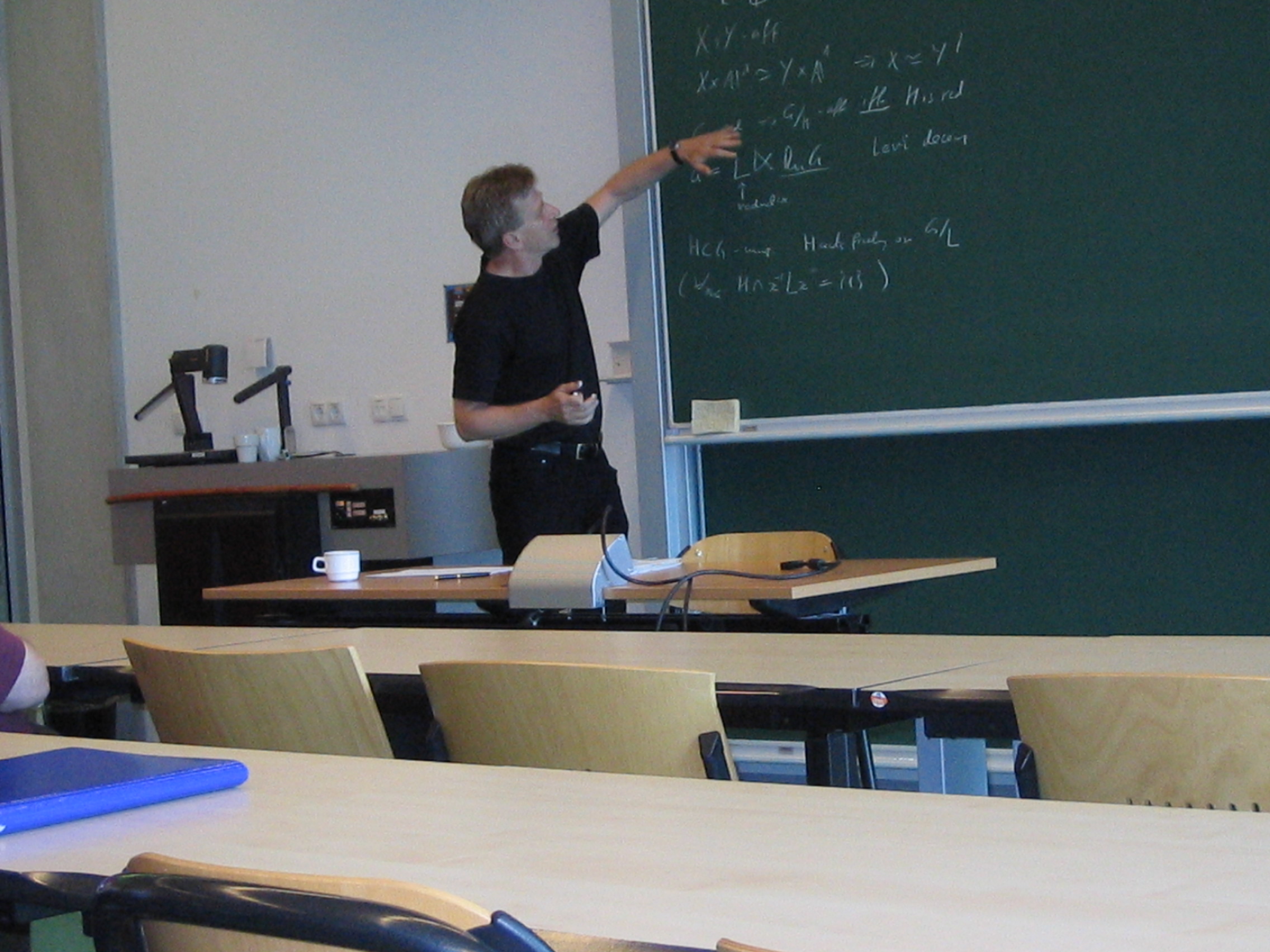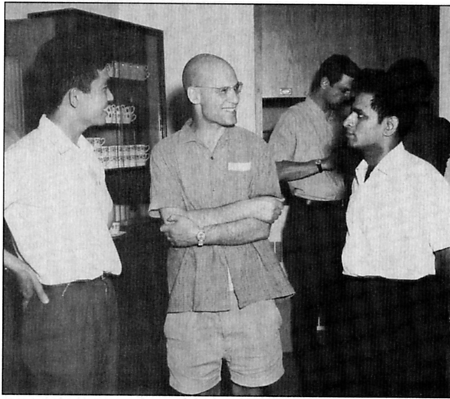

This home page was built in 2009 to publicize the research activity of the builder. Due to the laziness of the builder, only the Japanese page was open, which has not been renovated even once since then. As one of the organizers of the coming workshop " 2014 Kyoto Workshop on Algebraic Varieties and Automorphism Groups", he thinks it necessary to open the English page and renovate the contents of the pages.
The page builder Masayoshi Miyanishi was affiliated to Osaka University untill the year 2003, and then shifted to Kwansei Gakuin University in October, the same year and retired from this university in the year 2009. Now he is a guest researcher of the Research Center for Mathematical Sciences of Kwansei Gakuin University which started in the year 2008.
Around the time of retirement in 2009, he started to hold twice a year (March and September) in collaboration with various people a research meeting named "Research Meeting for Affine Algebraic Geometry" at the Osaka-Umeda Campus of Kwansei Gakuin University and we have held twelve meetings including the international meeting in the year 2011. The thirteenth meeting is the above mentioned workshop to be held in the Research Institute for Mathematical Sciences (RIMS), Kyoto University during July 7 to 11, 2014. The details of the meeting can be obtained from the workshop home page. The researchers who are interested are very welcome. The picture is a view of the city of Kyoto from the Syugakuin Imperial Villa.

The cojecture asks if an unramified endomorphism (self-map) of a complex affine space is an isomorphism. Its translation in terms of a polynomial ring is more well-known. It holds in the case of dimension one, but it turns out to be a very hard problem if the dimension is two or more. The dimension two case is a central target and considered by many researchers in the world. Unfortunately, most of announced proofs are defective, but there have been a steady, though slow, progress of the problem.
The page builder took a different approach. Namely, he generalized the conjecture by replacing the complex affine space by a complex algebraic variety, and called it the "Generalized Jacobian Conjecture (GJM)" which asks if an unramified endomorphism of a complex algebraic variety is a finite morphism. This generalized conjecture has counterexamples (though very few), but holds true for almost all smooth varieties. In the case of dimension two, one of unsettled cases which is not for the affine plane is for an affine pseudo-plane which is by definition a smooth affine surface with a fibration by the affine lines such that all fibers but a single irreducible multiple fiber are smooth. Such a category of affine surfaces can be used as a test surface for other important problems and conjectures. The picture shows Danielewski lecturing in the Nijmegen Conference in 2009.
It is not an easy task to explore what higher-dimensional algebraic varieties look like. Those with (logarithmic) Kodaira dimension minus infinity are often related to the rationality of varieties. Though very interesting, the study requires us to find some new ideas.
One can use an algebraic group action on an algebraic variety. The algebraic group which has been used is in most cases a reductive algebraic group. The reason is that the invariant subring under such a group action is finitely generated over the ground field, hence the quotient variety exists, and the quotient morphism enables us to decompose a given variety into lower-dimensional varieties. An example of reductive algebraic group is an algebraic torus, and geometry using torus actions is called the toric geometry.
Meanwhile, a unipotent group, contrary to the necessity felt in the study of rationality question, has been hardly treated in a serious way. It is perhaps due to the existence of counterexamples to the fourteenth problem of Hilbert. Namely, the invariant subrings are not necessarily finitely generated, hence the quotient variety might not exist and decomposing a variety by quotient morphisms does not work.
Recently, the additive group (scheme), the simplest unipotent group, has been extensively used in the three-dimensional case because one can avoid the above dilemma by a theorem of Zariski. An action of the additive group scheme on an affine variety can be interpreted by a locally nilpotent derivation on the coordinate ring, and the study in this direction has been greatly advanced. Furthermore, the fibration similar to the quotient morphism of a unipotent group is observed as a fibration by the affine line and the affine plane. A new geometry, unipotent geometry, is proposed to include a study of algebraic varieties of negative Kodaira dimension by means of uniptent group actions and fibrations by the affine space.

Affine geometry includes the study of the automororphism group of the affine space, Jacobian Conjecture, quotient varieties by algebraic group actions, and applications to singularity theory. Affine geometry is the name used in Mathematics Subject Classification by the American Mathematical Society, but the name Affine algebraic geometry is more popular. In the latter naming, it includes study of non-complete algebraic varieties and study of polynomial rings (and affine domains) by algebro-geometric methods.
In recent years, many young researchers are active in France, Russia and other places, and every year there is held at least one conference entitled affine algebraic geometry somewhere in the world. It is desirable that algebraic geometry, without any distinction of being affine or projective and as it has been always so, is advanced by absorbing various ideas and tools from neighboring research areas. The picture was taken in the occasion of the 1970 Summer School at the Universite de Montreal, 1970.